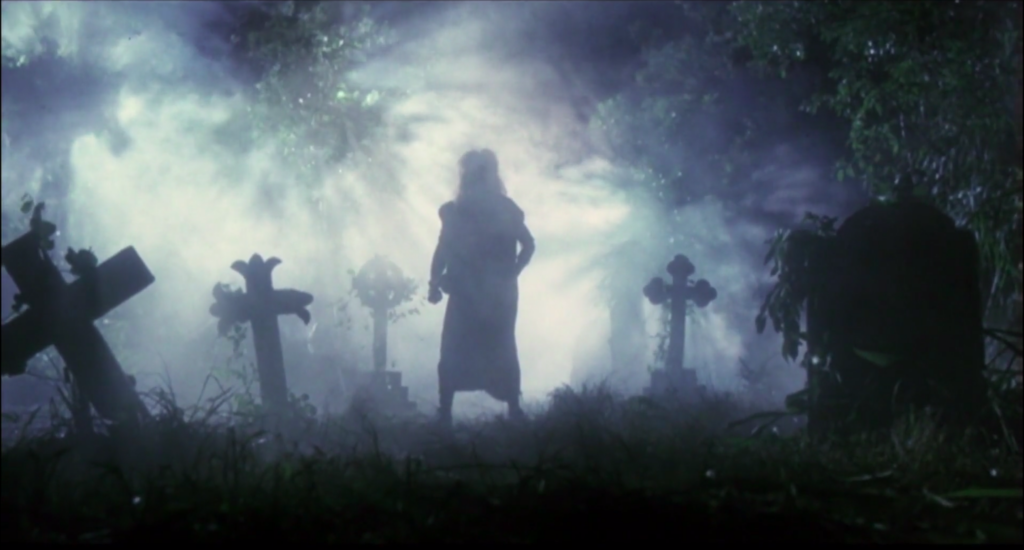
There is a scene in Witch From Nepal (1986) where the hero, Joe (Chow Yun-fat), is practicing his new magical, telekinetic powers at a restaurant with his girlfriend Ida (Yammie Lam). Behind Joe, hanging on the wall, are three movie posters: one for Superman II (1980), one for Indiana Jones & The Temple Of Doom (1984) and one for Flashdance (1983). Witch From Nepal is a hodgepodge of these three films; a genre mash-up typical of Hong Kong films but with a commentary on national identity that was growing ever more common in anticipation of the handover. The disparate aesthetics and narrative tropes of these films intersect in Witch From Nepal under the unifying style of glossy kineticism that defined Hong Kong pictures of that golden age.
Filmmaker Ching Siu-tung made Witch From Nepal a year before A Chinese Ghost Story (1987) at the same time that John Carpenter made Big Trouble In Little China (1986). Each of these films examines Chinese cultural identity through different genre machinations, though they all center around the horror tradition in some way. But unlike A Chinese Ghost Story, Witch From Nepal and Big Trouble In Little China are, for the most part, explicitly comedic, especially in how they subvert the character of the hero. The post-modernist impulse to deconstruct form, be it genre, narrative or character, becomes a means of disassembling populist notions of identity.
Consider that Joe is an everyday, average guy who suddenly finds himself a “fish out of water” with his new magic powers and mystic responsibilities. Joe is Clark Kent in Superman II inverted. Rather than forsake his power, Joe has his power thrust upon him. The identity of the “everyman” in Joe is just how he was born, not some byproduct of his super alter ego. Chow Yun-fat even mines the same screwball leading man territory and traditions that Christopher Reeve looked to in order to create his performance as Clark Kent.
But the failings and foibles of the “everyman” personified by Joe are also an aspect of Indiana Jones. And, like Jones, Joe must navigate a culture vastly different from his own that he has been enlisted to protect and champion. Joe is a synthesis of Clark Kent and “The Man In The Hat”. Joe is more romantic than Dr. Jones but he possesses the same very human flaws like infidelity, casual racism, and sometimes even cowardice.
The zombies in the graveyard sequence of Witch From Nepal and the flickering torch lights all suggest the titular Temple of Doom. However, the bulk of Witch From Nepal takes its stylistic cues from Flashdance. The sex scene behind a neon billboard and the fight between Joe and the evil demon (Dick Wei) are each backlit, show stopping visuals that take the characters out of the reality of the film and put them into a tableau of heightened fantasy. The dynamic lighting choices that Ching Siu-tung makes in Witch From Nepal all revolve around the more supernatural characters like the demon or the witch Sheila (Emily Chu). Joe manifests himself as the hero he is intended to be in these moments when the world of the film literally erupts into a highly stylized set piece.
On an allegorical level Joe’s transformation from average guy to defender of ancient mysticism is representative of the identity crisis that awaited Hong Kong. The exit from the British Empire and the return to China is an essential aspect of Joe’s journey and character. In Witch From Nepal that metamorphosis is depicted as one of arduous self sacrifice and compromise; something to dread and put off rather than embrace.
